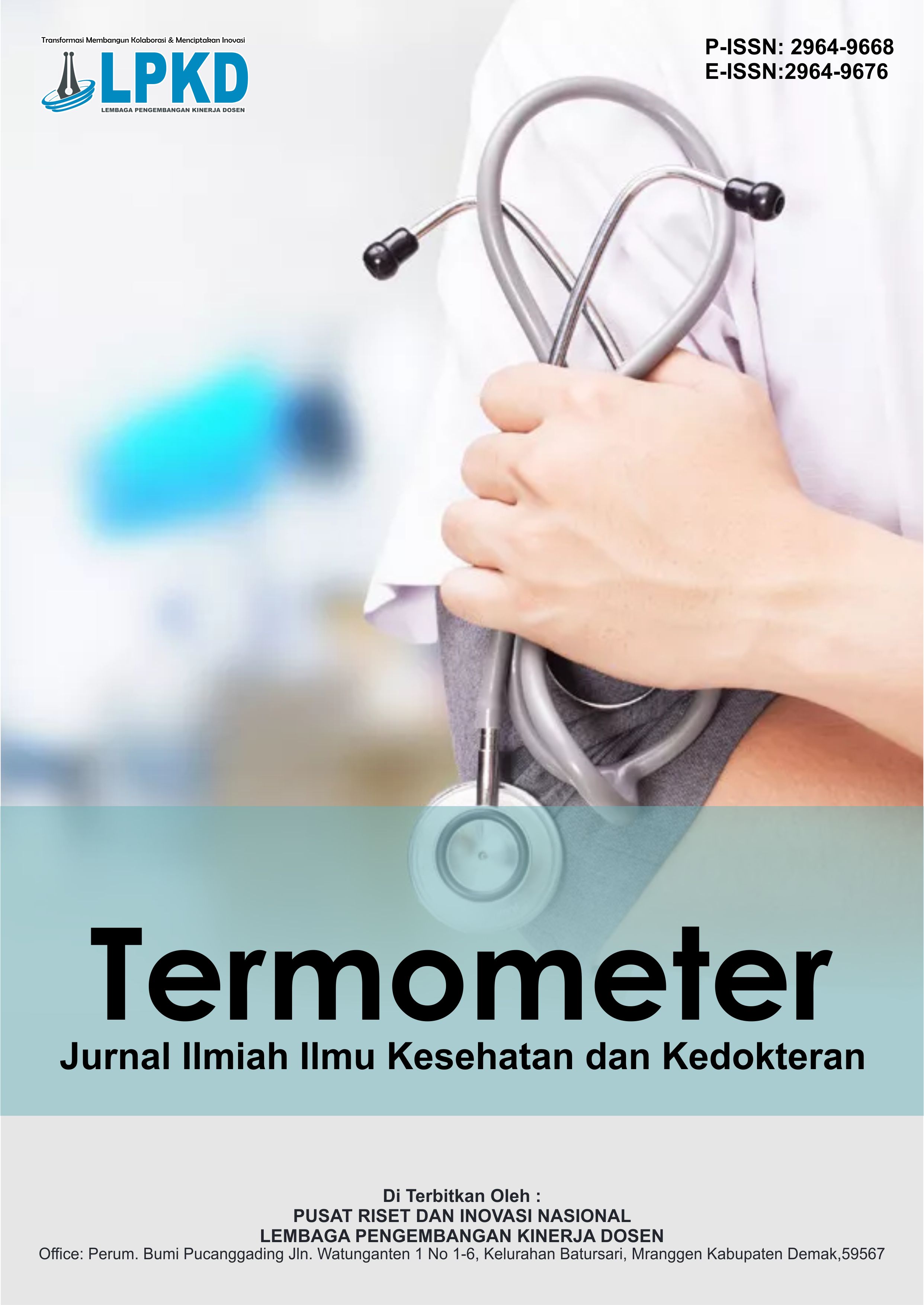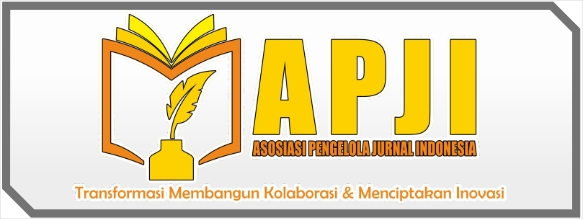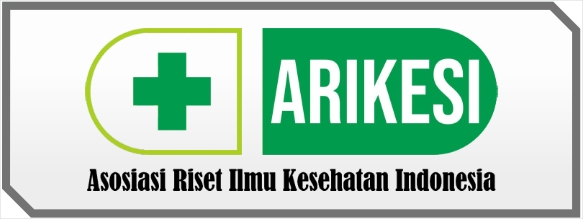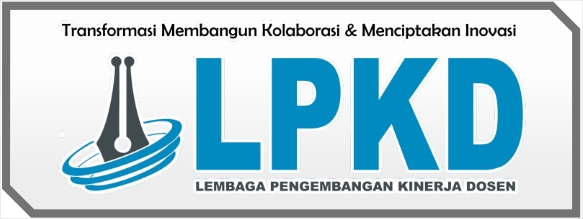Nanopartikel Perak dari Ekstrak Kulit Nanas: Potensi Antifungal terhadap Malassezia furfur ATCC 14521
DOI:
https://doi.org/10.55606/termometer.v3i1.4563Keywords:
Malassezia, Mildew, Pityriasis, AntifungalAbstract
Malassezia furfur is a lipophilic fungus commonly found in tropical regions with high humidity, particularly on human skin. One of the diseases caused by this fungus is Pityriasis versicolor (tinea versicolor). Treatment for this condition typically involves the use of azole-based drugs, either topically or systemically. However, the emergence of azole-resistant Malassezia furfur strains has reduced treatment efficacy. Thus, the development of new antifungal agents is necessary, one of which utilizes nanotechnology such as biologically synthesized silver nanoparticles (AgNPs), which are environmentally friendly and utilize waste materials. Pineapple peel is a type of waste that contains active compounds like flavonoids, alkaloids, tannins, and saponins, which have the potential to inhibit the growth of Malassezia furfur. This study aimed to characterize the biosynthesis of silver nanoparticles from pineapple peel infusion and evaluate their antifungal activity against Malassezia furfur at optimal concentrations and durations. Using a post-test only with control group design, the research involved preparing pineapple peel infusion, synthesizing silver nanoparticles, characterizing them using UV-Vis spectrophotometry, and testing antifungal activity with the well diffusion method. The results indicated the formation of AgNPs, marked by a color change from yellow to dark yellow with wavelengths of 320-340 nm. Antifungal activity tests showed the largest inhibition zone at a 1:6 ratio (11 mm) and the smallest at a 1:2 ratio (2.38 mm). In conclusion, silver nanoparticles synthesized from pineapple peel infusion demonstrated antifungal activity against Malassezia furfur.
Downloads
References
Ahmad, Z., & Ervianti, E. (2022). Dermoscopic examination in Malassezia folliculitis. Berkala Ilmu Kesehatan Kulit dan Kelamin, 34(2), 130–136. https://doi.org/10.20473/bikk.v34.2.2022.130-136
Apriliana, E., & Heviana, L. N. (2018). Penggunaan kunyit (Curcuma domestica) sebagai terapi Pityriasis versicolor. J Agromedicine, 5(1), 473–477.
Aritonang, B. N. R. S., Hartini, H., Yuliandari, A., Naranz, A., & Yola, S. (2022). Identifikasi Malassezia furfur pada kerokan kulit petani sawit PT Panca Surya Garden. Dalam Prosiding Rapat Kerja Nasional AIPTLMI (hlm. 1–10). Yogyakarta: AIPTLMI-IASMLT.
Arzi, D. S., Wisnuwardhani, H. A., & Rusnadi, R. (2020). Kajian pustaka sintesis nanopartikel perak menggunakan ekstrak tanaman sebagai bioreduktor dan aplikasinya. Dalam Prosiding Farmasi (Vol. 6, hlm. 362–370). Bandung: FMIPA Unisba. https://doi.org/10.29313/.v6i2.23041
Chuchita, Santoso, S. J., & Suyanta. (2018). Sintesis nanopartikel dari perak nitrat dengan tirosin sebagai reduktor dan agen pengkaping untuk membentuk nanokomposit film AgNPs-poli asam laktat sebagai antibakteri. Berkala MIPA, 25(2), 140–153.
Chugh, H., Sood, D., Chandra, I., Tomar, V., Dhawan, G., & Chandra, R. (2018). Role of gold and silver nanoparticles in cancer nano-medicine. Artificial Cells, Nanomedicine and Biotechnology, 46(sup1), 1210–1220. https://doi.org/10.1080/21691401.2018.1449118
Cruz-Luna, A. R., Cruz-Martínez, H., Vásquez-López, A., & Medina, D. I. (2021). Metal nanoparticles as novel antifungal agents for sustainable agriculture: Current advances and future directions. Journal of Fungi, 7(1033), 1–20. https://doi.org/10.3390/jof7121033
Dewi, D. A. P., & Warganegara, E. (2016). Manfaat bawang putih (Allium sativum Linn.) pada pengobatan infeksi fungal Tinea versicolor (Panu). Majority, 5(1), 33–37. https://api.semanticscholar.org/CorpusID:90227907
Dewi, K. T. A., Kartini, K., Sukweenadhi, J., & Avanti, C. (2019). Karakter fisik dan aktivitas antibakteri nanopartikel perak hasil green synthesis menggunakan ekstrak air daun sendok (Plantago major L.). Pharmaceutical Sciences and Research, 6(2), 69–81. https://doi.org/10.7454/psr.v6i2.4220
Gaol, T. R. L., Kurniati, I. D., & Rakhmawatie, M. D. (2022). Aktivitas antifungi cuka nanas (Ananas comosus) pada pertumbuhan jamur Malassezia furfur. Biomedika, 14(2), 136–146. https://doi.org/10.23917/biomedika.v14i2.18564
Hald, M., Arendrup, M. C., Svejgaard, E. L., Lindskov, R., Foged, E. K., & Saunte, D. M. L. (2015). Evidence-based Danish guidelines for the treatment of Malassezia-related skin diseases. Acta Dermato-Venereologica, 95(1), 12–19. https://doi.org/10.2340/00015555-1825
Haryani, Y., Kartika, G. F., Yuharmen, Y., Putri, E. M., Alchalish, D. T., & Melanie, Y. (2016). Pemanfaatan ekstrak air rimpang jahe merah (Zingiber officinale Linn. var. rubrum) pada biosintesis sederhana nanopartikel perak. Chimica et Natura Acta, 4(3), 151–155. https://doi.org/10.24198/cna.v4.n3.10989
Helga, P., Sinaga, G. K., & Dewi, S. P. A. (2021). Pityriasis versicolor atipikal: Sebuah laporan kasus. Collaborative Medical Journal (CMJ), 4(3), 20–24.
Downloads
Published
How to Cite
Issue
Section
License
Copyright (c) 2024 Termometer: Jurnal Ilmiah Ilmu Kesehatan dan Kedokteran

This work is licensed under a Creative Commons Attribution-ShareAlike 4.0 International License.










